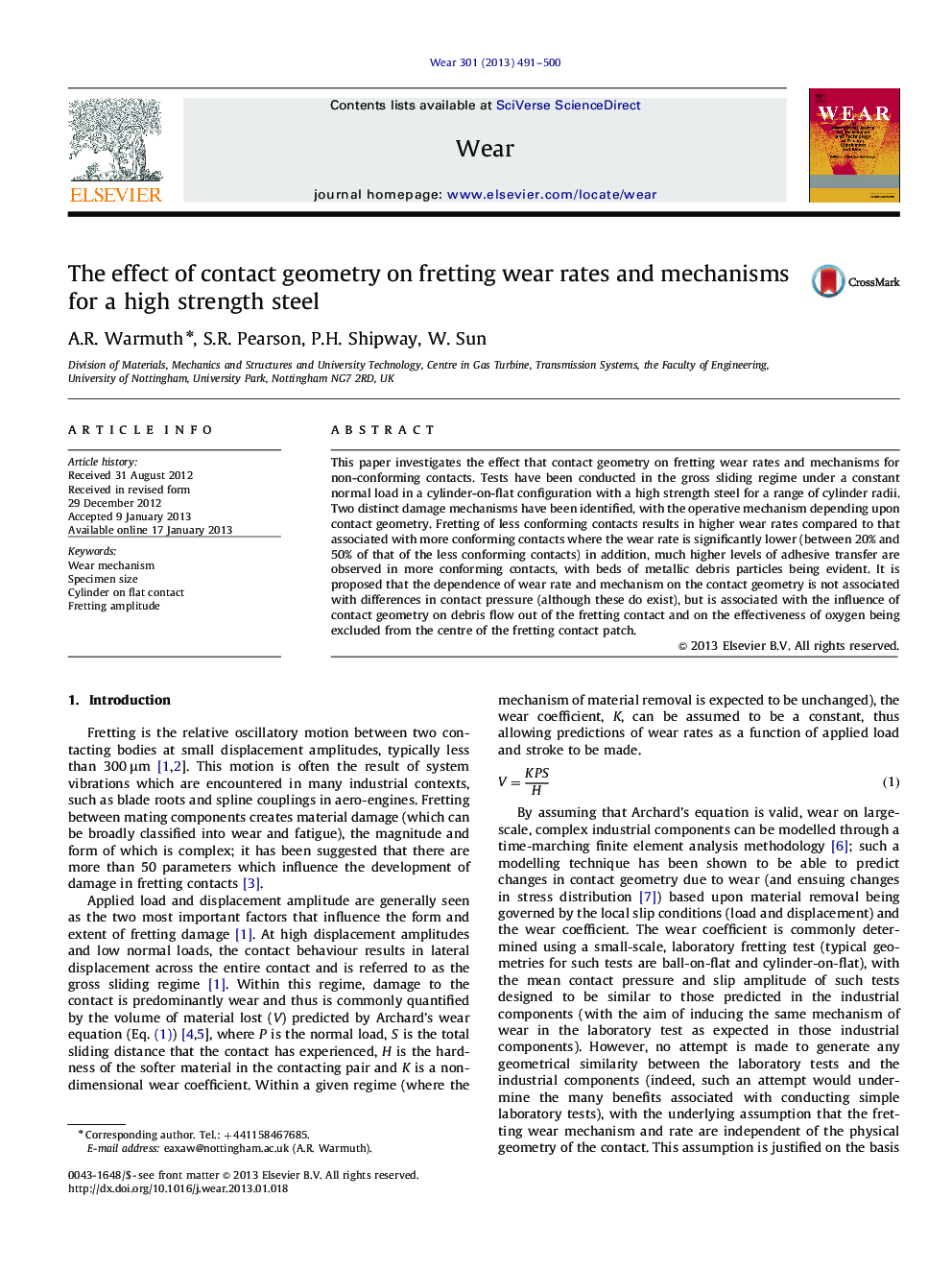| Article ID | Journal | Published Year | Pages | File Type |
|---|---|---|---|---|
| 617558 | Wear | 2013 | 10 Pages |
Abstract
This paper investigates the effect that contact geometry on fretting wear rates and mechanisms for non-conforming contacts. Tests have been conducted in the gross sliding regime under a constant normal load in a cylinder-on-flat configuration with a high strength steel for a range of cylinder radii. Two distinct damage mechanisms have been identified, with the operative mechanism depending upon contact geometry. Fretting of less conforming contacts results in higher wear rates compared to that associated with more conforming contacts where the wear rate is significantly lower (between 20% and 50% of that of the less conforming contacts) in addition, much higher levels of adhesive transfer are observed in more conforming contacts, with beds of metallic debris particles being evident. It is proposed that the dependence of wear rate and mechanism on the contact geometry is not associated with differences in contact pressure (although these do exist), but is associated with the influence of contact geometry on debris flow out of the fretting contact and on the effectiveness of oxygen being excluded from the centre of the fretting contactpatch.
Keywords
Related Topics
Physical Sciences and Engineering
Chemical Engineering
Colloid and Surface Chemistry
Authors
A.R. Warmuth, S.R. Pearson, P.H. Shipway, W. Sun,
